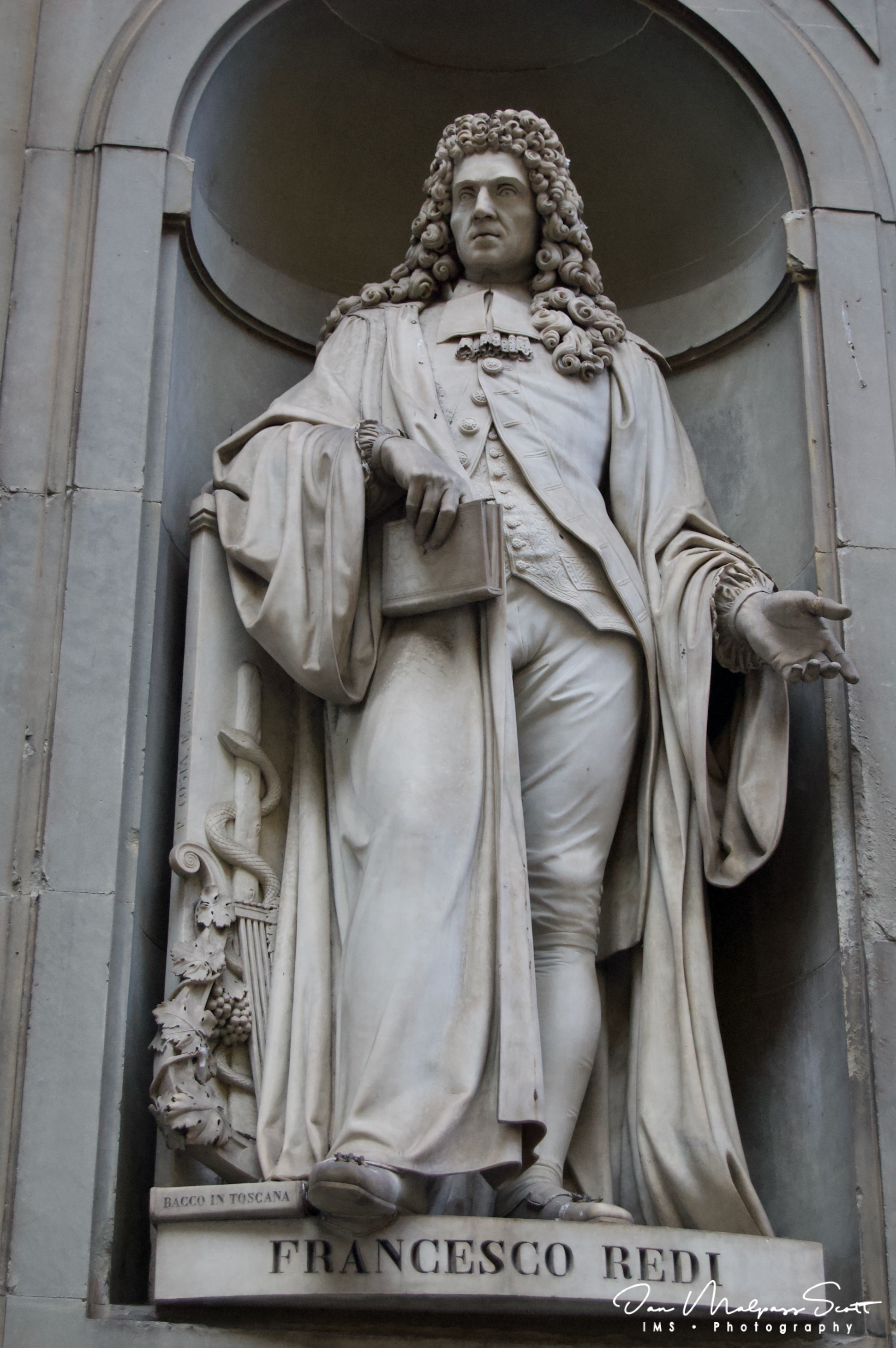Statue of Francesco Redi at the Uffizi, Firenze
Francesco Redi (18 February 1626 – 1 March 1697) was an Italian physician, naturalist, biologist and poet. He is referred to as the “founder of experimental biology”, and as the “father of modern parasitology”. He was the first person to challenge the theory of spontaneous generation by demonstrating that maggots come from eggs of flies.
Having a doctoral degree in both medicine and philosophy from the University of Pisa at the age of 21, he worked in various cities of Italy. A rationalist of his time, he was a critic of verifiable myths, such as spontaneous generation.[8] His most famous experiments are described in his magnum opus Esperienze Intorno alla Generazione degl’Insetti (Experiments on the Generation of Insects), published in 1668. He disproved that vipers drink wine and could break glasses, and that their venom was poisonous when ingested. He correctly observed that snake venoms were produced from the fangs, not the gallbladder, as was believed. He was also the first to recognize and correctly describe details of about 180 parasites, including Fasciola hepatica and Ascaris lumbricoides. He also distinguished earthworms from helminths (like tapeworms, flukes, and roundworms). He possibly originated the use of the control, the basis of experimental design in modern biology. A collection of his poems first published in 1685 Bacco in Toscana (“Bacchus in Tuscany”) is considered among the finest works of 17th-century Italian poetry, and for which the Grand Duke Cosimo III gave him a medal of honor.
The Uffizi Gallery (Italian: Galleria degli Uffizi, pronounced [ɡalleˈriːa deʎʎ ufˈfittsi]) is a prominent art museum located adjacent to the Piazza della Signoria in the Historic Centre of Florence in the region of Tuscany, Italy. One of the most important Italian museums, and the most visited, it is also one of the largest and best known in the world, and holds a collection of priceless works, particularly from the period of the Italian Renaissance.
After the ruling house of Medici died out, their art collections were gifted to the city of Florence under the famous Patto di famiglia negotiated by Anna Maria Luisa, the last Medici heiress. The Uffizi is one of the first modern museums. The gallery had been open to visitors by request since the sixteenth century, and in 1765 it was officially opened to the public, formally becoming a museum in 1865.
Today, the Uffizi is one of the most popular tourist attractions of Florence and one of the most visited art museums in the world.


